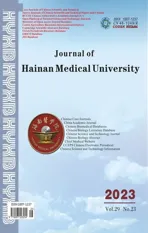Mechanism of Sanshi decoction in the treatment of gouty arthritis by NLRP3 inflammasome
2023-03-06PIAOYongzhuQIMingmingNIEShuanglianPANGuoxiongZHANGHaoWANGXinbo
PIAO Yong-zhu, QI Ming-ming, NIE Shuang-lian, PAN Guo-xiong, ZHANG Hao,WANG Xin-bo✉
1. First Affiliated Hospital, Heilongjiang University of Chinese Medicine, Harbin 150040, China
2. Heilongjiang University of Chinese Medicine, Harbin 150040, China
Keywords:
ABSTRACT Objective: To observe the effect of Sanshi decoction on P2X7R/PKR pathway-mediated activation of macrophage NLRP3 inflammasome to elucidate the molecular mechanism of Sanshi decoction in the treatment of gouty arthritis.Methods: THP-1 macrophages were divided into control group, model group, low dose group, medium dose group, high dose group of Sanshi decoction and inhibitor group.The remaining groups were induced with monosodium urate crystals to establish a gouty arthritis cell model except the control group.Flow cytometry was used to detect macrophage ROS levels in each group, ELISA to detect MDA levels and SOD and GSH-PX activities in each group, and Western blot to detect P2X7R/PKR pathway and NLRP3 inflammasome-associated protein expression.We also used CCK-8 and flow cytometry to measure MH7A activity and apoptotic levels.Results:Compared with the control group, the ROS level, the content of MDA, the activities of SOD and GSH-PX were significantly increased, and the expression levels of NLRP3, full-length IL-1β, pro-IL-1β, full-length IL-18, pro-IL-18, full-length caspase-1, GSDMD-NT, P2X7R and p-PKR protein expression levels were significantly upregulated, and GSDMD-FL protein expression was significantly downregulated in the model group, and that the differences between them were statistically significant (P<0.05 and P<0.01).Compared with the model group, Sanshi decoction could reduce macrophage ROS levels, MDA content, SOD and GSHPX activities, and downregulate macrophage NLRP3, mature IL-1β, pro IL-1β, mature IL-18, pro IL-18, mature caspase-1, GSDMD-NT, P2X7R and p-PKR protein expression,and upregulate GSDMD-FL protein expression, with statistically significant differences(P<0.05 and P<0.01).In addition, MH7A activity was downregulated, and apoptosis level was upregulated in the model group in comparison with the control group, and differences were all significantly different (P<0.05).As compared to the model group, Sanshi decoction could significantly increase the activity of MH7A and inhibit the level of apoptosis, and that the differences between them were statistically significant (P<0.05 and P<0.01).Conclusion:Sanshi decoction can achieve the therapeutic effect of gouty arthritis by inhibiting P2X7R/PKR pathway activation, thus reducing the activation level of NLRP3.
1.Introduction
Gouty Arthritis (GA) is an inflammatory lesion caused by abnormal purine metabolism and accumulation of blood uric acid in vivo, and its clinical manifestations are dominated by redness,swelling, and heat pain in the joints and surrounding tissues of toes,ankles, and knees.As a common inflammatory joint lesion, the incidence of GA in China is increasing year by year and showing a trend of rejuvenation[1-2].The incidence of the disease is higher in men than in women, and different living environments can lead to fluctuating incidence rates[3].
Excessive accumulation of blood uric acid in the body leads to the precipitation of sodium urate (MSU) crystals, and the deposition of the latter in joint tissues stimulates the abnormal secretion of inflammatory factors, such as interleukin 1β (IL-1β) and IL-18, through the aberrant activation of multiple signaling pathways,which in turn contributes to the formation of inflammation in the GA[4-5].NLRP3 Inflammatory vesicles are NOD-like receptor thermal protein domain associated protein 3 (NLRP3), Apoptosisassociated speck-like protein containing a CARD (ASC) in a signaling complex with cysteinyl aspartate specific proteinase(Caspase-1), NLRP3 inflammatory vesicles are activated by MSU stimulation, and through activated Caspase-1, NLRP3 is activated.cleaves Pro-IL-1β, which leads to the maturation and secretion of IL-1β, which in turn generates an inflammatory inductive response[6-7].Sanshi decoction is from 《Articles on Warm Diseases》:“Departmental dampness spreads to the triple jiao...Sanshi decoction is the mainstay”, which has the efficacy of clearing heat and diuresis of dampness, and promoting the unification of the triple jiao.In this study, differentiated macrophages were induced by fobol ester,and NLRP3 activation model was established by MSU induction,by observing the expression of P2X7R/PKR signaling pathway in macrophages.On this basis, a macrophage-synoviocyte co-culture system was used, thus elucidating the molecular mechanism of Sanshi decoction for the treatment of GA.
2.Materials and methods
2.1 Experimental animals and cells
Forty male SD rats at 7 weeks of age were provided by the Experimental Animal Center of Heilongjiang University of Traditional Chinese Medicine (Animal Production Qualification Certificate No.: SCXK (HEI) 2018-007) and kept in the Animal Experiment Center of Heilongjiang University of Chinese Medicine at a room temperature of 20~25 ℃, cyclic light exposure, and free drinking water.
THP-1 (human monocytic leukemia) and MH7A (human rheumatoid arthritis fibroblastic synoviocytes) cell lines were purchased from Wuhan Punosai Life Sciences Co.
2.2 Reagents and Instruments
Sanshi decoction (talc 30 g, gypsum 30 g, chrysocolla 15 g,almond 15 g, zhuju 15 g, ginkgo biloba 15 g, white Tongzhi 10 g) was purchased from the Herbal Medicine Bureau of the First Affiliated Hospital of Heilongjiang University of Chinese Medicine and was prepared as a concentrate for spare use.Fosfomycin was purchased from Ebixin Shanghai Biotechnology Co., Ltd (item no.abs9107); MSU was purchased from Sigma (item no.U2875);P2X7R inhibitor (AZ10606120 dihydrochloride) was purchased from MedChemExpress, Inc.in the USA (item no.HY-108669);RPMI-1640 culture medium was purchased from GCI, USA.1640 culture medium was purchased from Gibco (No.C11875500BT);Malondialdehyde (MDA), Superoxide Dismutase (SOD), CCK8 assay kit and Glutathione Peroxidase (GSH) were purchased from MedChemExpress (No.HY-108669).Peroxidase (GSH-PX) were purchased from Jiangsu Enzyme Immunity Industrial Co.Ltd.(item numbers: 68102-1-Ig, 60070-1-Ig, 66737-1-Ig, 81482-1-RR, 66387-1-Ig, 28207-1-AP, and 66646-1-Ig); p-PKR and HRP-labeled goatanti-rabbit IgG secondary antibodies were purchased from Abcam Inc.of the United States (item numbers: ab32036 Annexin V-FITC apoptosis detection kit and cellular reactive oxygen species detection kit were purchased from Biyuntian Biotechnology Co.The enzyme labeling instrument, electrophoresis tank and electrophoresis instrument were purchased from Bio-Rad (models PR4100, Mini-PROTEAN Tetra and PowerPac HC, respectively); the flow cytometer was purchased from Shanghai Jumo Medical Instrument Company Limited (model No.Wmini52); and the thermostatic cell culture incubator was purchased from Thermo Fisher Scientific(model No.HERACELL150i).HERACELL150i).
2.3 Methods
2.3.1 Preparation of drug-containing sera
According to the experimental requirements, rats were divided into the control group and low, medium and high dose of Sanshi decoction groups 10 rats after one week of feeding.The specifications of Sanshi decoction concentrate were 26.16 g/kg,52.32 g/kg and 104.64 g/kg 1mL each time.The control group was given an equal volume of saline treatment.It was administered once daily for 1 week.After treatment, rats were anesthetized by intraperitoneal injection, and blood was collected from the abdominal aorta.The serum was centrifuged at 3500 r/min for 10 min, inactivated in a water bath for 30 min, and then filtered through a membrane and prepared for use.
2.3.2 Cell induction and differentiation
THP-1 was cultured in RPMI-1640 culture medium (containing 10% FBS, 1% penicillin-streptomycin double antibody and β-mercaptoethanol), with the incubator setting: 37 ℃, containing 5% CO2, and changing the liquid once in 2~3 d.Cells in logarithmic growth phase were inoculated in 6-well plates (1×106cells/mL), and fobol ester (160 nmol/L) was added to induce THP-1 differentiation to macrophages, and the cell-adherent status was used to indicate successful differentiation.
2.3.3 Cell grouping and drug intervention
Macrophages in 1.3.2 were inoculated in 6-well plates at a density of 2.5×105cells/mL, 900 μL per well.cells were grouped according to the protocol and subjected to drug intervention.(1) Blank group:900 μL medium + 100 μL control serum; (2) Model group: 900 μL medium + 100 μL control serum + MSU 400 μM; (3) Sanshi decoction low dose group: 900 μL medium + MSU 400 μM +100 μL drug-containing serum (26.16 g/kg); (4) Sanshi decoction medium dose group: 900 μL medium +MSU 400 μM+100 μL drugcontaining serum (52.32 g/kg); (5) Sanshi decoction high-dose group: 900 μL medium +MSU 400 μM+100 μL drug-containing serum (104.64 g/kg); (6) Inhibitor group: 900 μL medium+100 μL control serum+ AZ10606120 dihydrochloride 10 mM.
2.3.4 Cell co-culture system
Synovial cells were passaged in DMEM culture (containing 20%fetal bovine serum, 1% dual antibody) and incubated in an incubator with a CO2 concentration of 5% and 37 ℃.Then synoviocytes in logarithmic growth phase were placed in the upper layer of Transwell at a density of 1×105/mL, and subsequently the Transwell was placed in a 6-well plate to construct a co-culture system with macrophages from the groups mentioned above.
2.3.5 Flow cytometry assay
Collect the macrophage cells of each group in 1.3.3 after 48h,centrifuge at 1 000 r/min for 5 min, discard the supernatant, add PBS and resuspend and centrifuge at 1 000 r/min for 5 min, wash with PBS twice, discard the supernatant, leave 100 μL of cells in the centrifugal tube, mix well, put on ice, and detect them on the machine with DCFH-DA as the fluorescent probe.
The synovial cells were isolated and washed with PBS, then the precipitate was collected and 100 μL of Binding buffer was added to suspend the cells, and Annexin V-FITC (5 μL) and PI (1 μL) were added to the cell suspension and incubated for 15 min under a lightavoiding environment, and then detected by flow cytometry.Positive Annexin V-FITC indicated the early stage of apoptosis, double positive Annexin V-FITC and PI indicated the late stage of apoptosis,and the sum of both indicated the apoptosis level of the cells.
2.3.6 Western blot assay
Macrophages from each group in 1.3.3 were collected after 48h and cell lysis was performed by adding appropriate RIPA on ice.Subsequently the supernatant was taken after centrifugation at 2 000r/min for 15 min.BCA method was used to detect the concentration of protein.A 25 μg of protein was taken, and the proteins were separated by SDS-PAGE and then transferred to PVDF, which was closed with 5% skimmed milk at room temperature for 1 h.Diluted primary antibodies: NLRP3, IL-1β, IL-18, Caspase-1, GSDMD, P2X7R, PKR, p-PKR, PKR and β-actin were added, and the cells were incubated at 4 ℃ overnight.After that, HRP-labeled sheep anti-rabbit IgG secondary antibody was added, and the incubation was continued at room temperature for 2 h.Photographs were taken using a gel imaging system, and the study was carried out using β-actin as an internal reference in order to calculate the relative expression level of the target proteins.
2.3.7 CCK8 assay
Synoviocytes were inoculated in 96-well plates, and when the cells were adhered to the wall according to the different groups were given the corresponding drug treatment, set up 6 compound wells,incubated at 37 ℃ and 5% CO2for 48 h, added CCK8 and incubated for 2 h, and the absorbance was detected at the wavelength of 450 nm.
2.4 Statistical analysis
SPSS software (version 26.0) was used for statistical analysis, and ANOVA was used to compare the data between multiple groups,and LSD was used to test the comparison between two groups, and P<0.05 suggested that the difference was statistically significant.
3.Results
3.1 The effect of Sanshi decoction on macrophage ROS level
As shown in Figure 1 and Table 1, the level of macrophage ROS in the model group was significantly increased compared with that in the control group, and the difference was statistically significant (P <0.05).And the levels of macrophage ROS in the low-dose, mediumdose, high-dose of Sanshi decoction and inhibitor groups were significantly decreased compared with the model group, and the differences were all statistically significant in comparison (P < 0.01).
Tab 1 Comparison of macrophage ROS levels in each group(n=3, ±s, %)
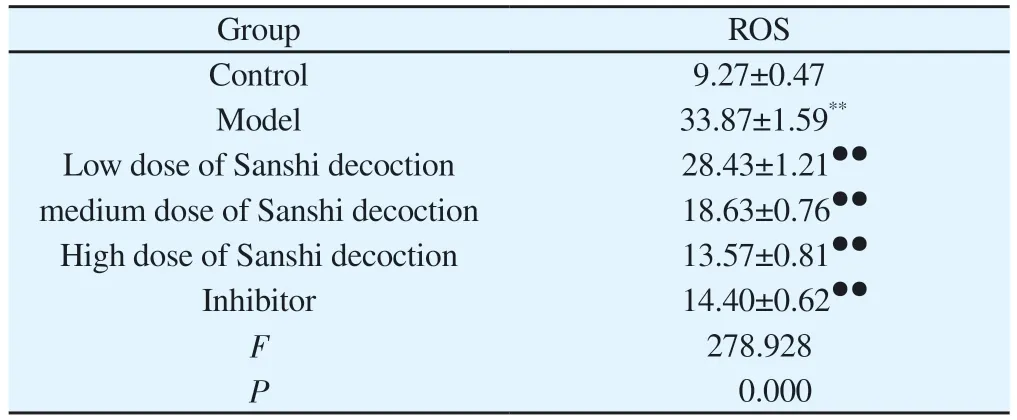
Tab 1 Comparison of macrophage ROS levels in each group(n=3, ±s, %)
Note: Compared with the control group, *P<0.05, **P<0.01; Compared with the model group, ●P<0.05, ●●P<0.01.Same below.
Group ROS Control 9.27±0.47 Model 33.87±1.59**Low dose of Sanshi decoction 28.43±1.21●●medium dose of Sanshi decoction 18.63±0.76●●High dose of Sanshi decoction 13.57±0.81●●Inhibitor 14.40±0.62●●F 278.928 P 0.000
3.2 Effects of Sanshi decoction on oxidative stress in macrophages
As seen in Table 2, compared with the blank group, the activities of SOD and GSH-PX of macrophages in the model group were significantly decreased, and the content of MDA was significantly increased, and the differences were all statistically significant (P <0.01).Compared with the model group, the activities of macrophage SOD and GSH-PX in the low-dose, medium-dose, high-dose of Sanshi decoction and inhibitor groups were significantly increased,and the content of MDA was significantly decreased, and the differences were all statistically significant (P < 0.05 and P < 0.01).

Fig 1 Comparison of macrophage ROS levels in each group
Tab 2 Comparison of oxidative stress indices in macrophages in each group(n=3, ±s)

Tab 2 Comparison of oxidative stress indices in macrophages in each group(n=3, ±s)
Group SOD(U/mL) MDA(mmol/mL) GSH-PX(U/mL)Control 300.15±9.53 39.83±3.15 678.21±44.70 Model 215.52±13.57** 88.06±3.86** 247.05±13.17**Low dose of Sanshi decoction 259.99±10.07● 60.58±2.86●● 331.66±16.19●●medium dose of Sanshi decoction 287.68±9.93●● 53.98±3.99●● 452.91±12.91●●High dose of Sanshi decoction 335.01±33.88●● 44.97±3.47●● 575.58±19.77●●Inhibitor 348.31±31.36●● 43.34±3.93●● 563.97±19.69●●F 16.541 75.023 140.990 P 0.000 0.000 0.000
3.3 The effect of Sanshi decoction on macrophage NLRP3 inflammatory vesicles
As shown in Figure 2, compared with the control group, the expression levels of macrophage NLRP3, Mature IL-1β, Pro IL-1β, Mature IL-18, Pro IL-18, Mature Caspase-1 and GSDMDNT proteins in the model group were significantly up-regulated,and the expression of GSDMD-FL proteins was significantly downregulated, and the differences were all statistically significance(P < 0.01).In contrast, the expression of Pro-Caspase-1 protein in macrophages was not significantly altered, and the difference was not statistically significant between the groups (P>0.05).The expression levels of NLRP3, Mature IL-1β, Pro IL-1β, Mature IL-18, Pro IL-18, Mature Caspase-1 and GSDMD-NT proteins in macrophages in the low-dose, medium-dose, high-dose of Sanshi decoction and inhibitor groups were significantly down-regulated compared with the model group, and the expression of GSDMDFL protein was significantly up-regulated, and the differences were all statistically significant (P < 0.01), while the expression of Pro-Caspase-1 protein in macrophages did not change significantly, and the differences were not statistically significant (P > 0.05).See Table 3 and Table 4.
3.4 The effect of Sanshi decoction on macrophage P2X7R/PKR signaling pathway
As shown in Figure 3 and Table 5, compared with the control group, the expression of P2X7R and p-PKR proteins in macrophages in the model group was significantly up-regulated, and the differences were statistically significant when compared between the groups (P < 0.01).In contrast, the expression of total-PKR protein in macrophages was not significantly altered, and the difference between groups was not statistically significant (P > 0.05).The expression levels of P2X7R and p-PKR proteins in macrophages in the low-dose, medium-dose, high-dose of Sanshi decoction and inhibitor groups were significantly down-regulated compared withthose in the model group, and the differences were all statistically significant (P < 0.05 and P < 0.01), whereas there was no obvious change in the expression of total-PKR proteins in macrophages, and the differences were not statistically significant when comparing among groups (P > 0.05).
Tab 3 Comparison of NLRP3, IL-1β and IL-18 protein expression in macrophages in each group(n=3, ±s)

Tab 3 Comparison of NLRP3, IL-1β and IL-18 protein expression in macrophages in each group(n=3, ±s)
Group NLRP3/β-actin Mature IL-1β/β-actin Pro IL-1β/β-actin Mature IL-18/β-actin Pro IL-18/β-actin Control 0.18±0.04 0.05±0.01 0.05±0.02 0.02±0.01 0.08±0.01 Model 0.93±0.04** 0.70±0.07** 0.98±0.12* 0.76±0.15** 0.93±0.07**Low dose of Sanshi decoction 0.67±0.07●● 0.51±0.03●● 0.69±0.18●● 0.37±0.04●● 0.66±0.14●●medium dose of Sanshi decoction 0.33±0.07●● 0.37±0.08●● 0.48±0.10●● 0.22±0.09●● 0.38±0.09●●High dose of Sanshi decoction 0.20±0.04●● 0.34±0.04●● 0.46±0.13●● 0.09±0.01●● 0.11±0.03●●Inhibitor 0.17±0.01●● 0.33±0.04●● 0.38±0.04●● 0.07±0.02●● 0.15±0.02●●F 122.841 52.349 23.267 42.359 73.760 P 0.000 0.000 0.000 0.000 0.000
Tab 4 Comparison of macrophage Caspase-1 and GSDMD protein expression in each group(n=3, ±s)

Tab 4 Comparison of macrophage Caspase-1 and GSDMD protein expression in each group(n=3, ±s)
Group Mature Caspase-1/Pro-Caspase-1 GSDMD-NT/β-actin GSDMD-FL/β-actin Control 0.06±0.03 0.01±0.01 0.99±0.07 Model 0.96±0.04** 0.80±0.15** 0.11±0.01**Low dose of Sanshi decoction 0.74±0.08●● 0.52±0.06● 0.38±0.04●●medium dose of Sanshi decoction 0.29±0.05●● 0.26±0.09●● 0.51±0.10●●High dose of Sanshi decoction 0.09±0.04●● 0.13±0.04●● 0.90±0.04●●Inhibitor 0.11±0.04●● 0.10±0.02●● 0.91±0.04●●F 182.648 43.512 111.320 P 0.000 0.000 0.000
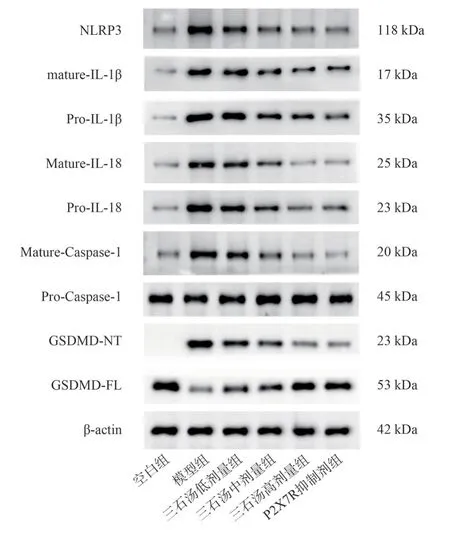
Fig 2 Expression levels of NLRP3 inflammatory vesicle-associated proteins in macrophages
Tab 5 Comparison of the expression levels of proteins of P2X7R/PKR pathway in macrophages(n=3, ±s)
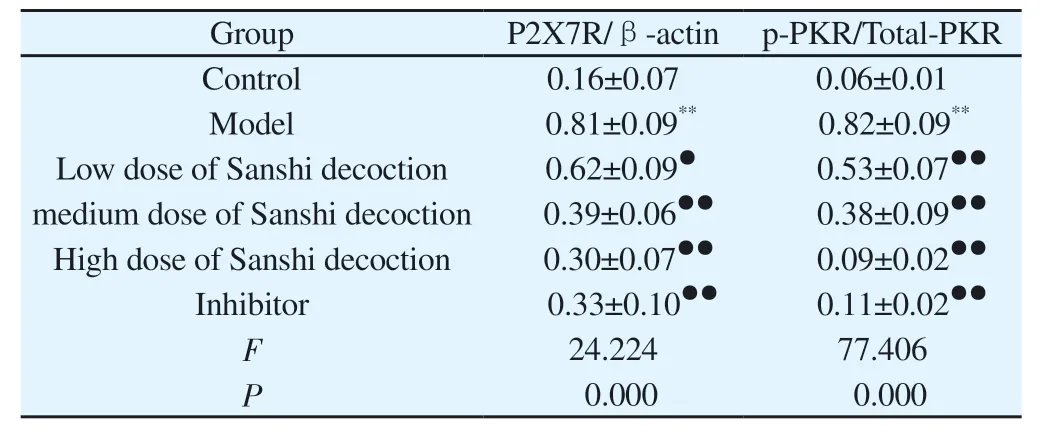
Tab 5 Comparison of the expression levels of proteins of P2X7R/PKR pathway in macrophages(n=3, ±s)
Group P2X7R/β-actin p-PKR/Total-PKR Control 0.16±0.07 0.06±0.01 Model 0.81±0.09** 0.82±0.09**Low dose of Sanshi decoction 0.62±0.09● 0.53±0.07●●medium dose of Sanshi decoction 0.39±0.06●● 0.38±0.09●●High dose of Sanshi decoction 0.30±0.07●● 0.09±0.02●●Inhibitor 0.33±0.10●● 0.11±0.02●●F 24.224 77.406 P 0.000 0.000
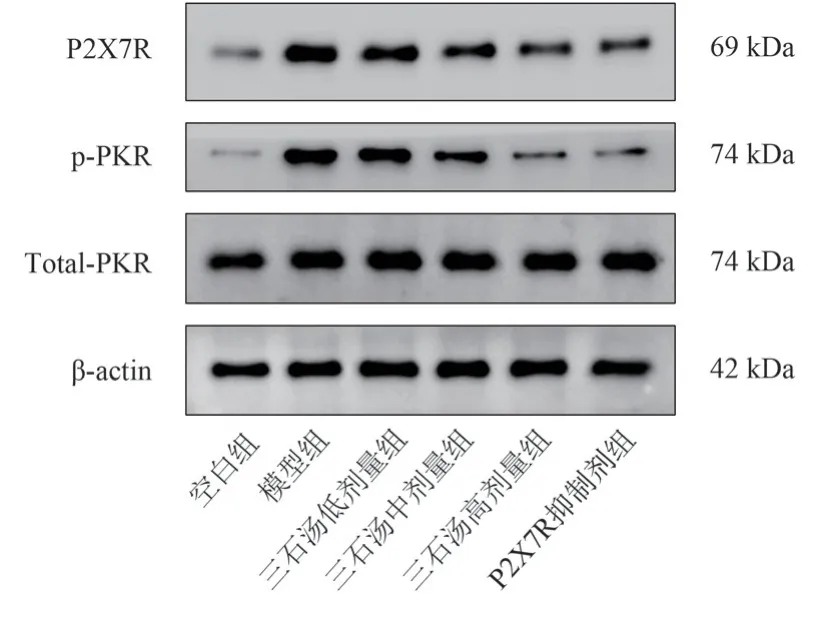
Fig 3 Comparison of the expression levels of proteins related to the P2X7R/PKR signaling pathway in macrophages
3.5 The effect of three-stone soup on cellular activity
As shown in Table 6, the activity of synoviocytes in the model group was significantly decreased compared with that in the control group, and the differences between groups were statistically significant (P < 0.01).The activity of synoviocytes in the middledose, high-dose of Sanshi decoction and inhibitor groups were significantly increased compared with that of the model group, and the differences between the groups were statistically significant (P <0.05 and P < 0.01).
3.6 Effect of Sanshi decoction on cell apoptosis
As shown in Figure 4 and Table 6, the level of synovial cell apoptosis in the model group increased significantly compared with that in the blank group, and the differences between groups were all statistically significant (P < 0.01).The apoptosis level of synovial cells in the middle-dose, high-dose of Sanshi decoction and inhibitor groups were significantly reduced compared with that of the model group, and the differences were all statistically significant (P < 0.05 and P < 0.01).
Tab 6 Comparison of synoviocyte activity and apoptosis levels in each group(n=3,±s)
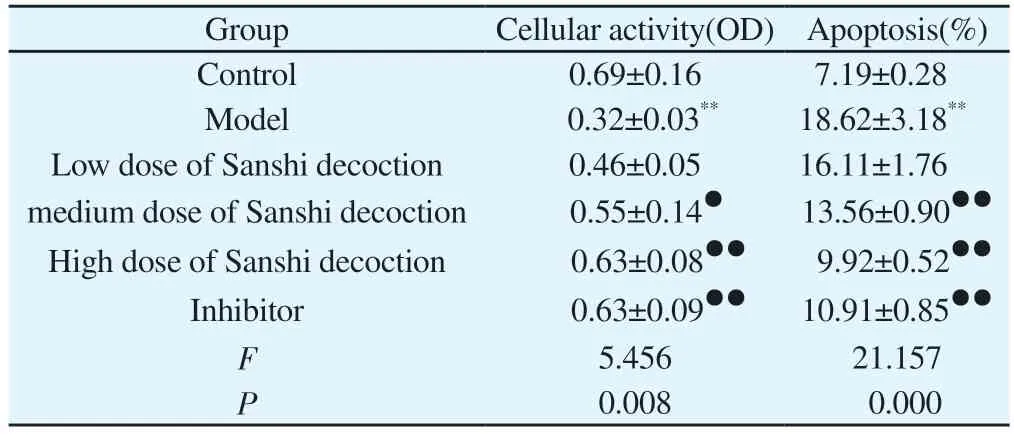
Tab 6 Comparison of synoviocyte activity and apoptosis levels in each group(n=3,±s)
Group Cellular activity(OD) Apoptosis(%)Control 0.69±0.16 7.19±0.28 Model 0.32±0.03** 18.62±3.18**Low dose of Sanshi decoction 0.46±0.05 16.11±1.76 medium dose of Sanshi decoction 0.55±0.14● 13.56±0.90●●High dose of Sanshi decoction 0.63±0.08●● 9.92±0.52●●Inhibitor 0.63±0.09●● 10.91±0.85●●F 5.456 21.157 P 0.008 0.000
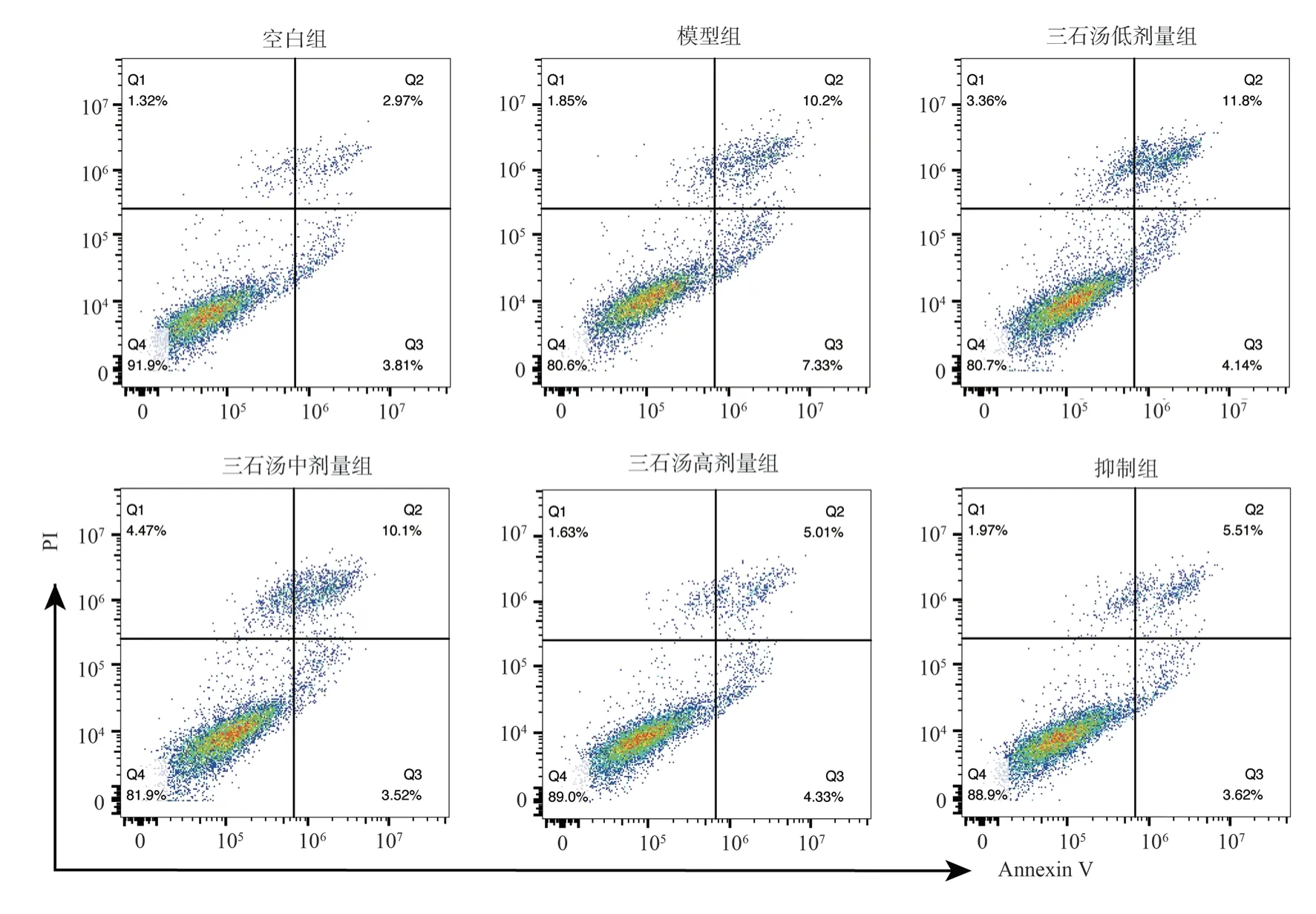
Fig 4 Comparison of synovial cell apoptosis levels in each group
4.Discussion
Oxidative stress is an imbalance between Reactive Oxygen Species(ROS) and endogenous antioxidant defenses in the body caused by external stimuli, which results in oxidative damage to cells beyond their tolerance range and causes the body to experience a stress response.ROS are a class of highly reactive oxidative molecules, which have the function of resisting pathogen attack and transmitting intracellular signals in normal conditions.ROS are highly reactive oxidizing molecules that resist pathogen attack and transmit intracellular signals in normal conditions.In pathological conditions, ROS production increases and the body’s ability to scavenge ROS decreases, leading to increased oxidative stress and damage to cellular structure and function[7].MDA, SOD, and GSHPX are hallmark indicators for assessing the body’s response to oxidative stress[8].MDA is one of the products of lipid peroxidation,which provides feedback on the degree of oxidative stress and cellular damage[9].SOD and GSH-PX are indicators of antioxidant enzymes that can scavenge ROS are antioxidant enzyme indicators that can scavenge oxygen radicals and other oxides to protect cells from damage caused by oxidative stress, and higher levels indicate better antioxidant capacity of the cells, and vice versa for poorer scavenging capacity of the cells for oxygen radicals[8].Research has proved that oxidative stress is one of the important willingness to lead to the occurrence of GA, and traditional Chinese medicine can achieve the effect of treating GA by inhibiting the level of oxidative stress[10].In this study, we found that MSU induction was able to increase macrophage ROS levels and MDA content, and inhibit macrophage SOD and GSH-PX activities.Sanshi Tang decreased macrophage ROS level and MDA content and elevated macrophage SOD and GSH-PX activities in a dose-dependent manner.
Isolated MSU’s do not trigger GA and are required to activate the NLRP3 inflammasome which in turn causes inflammation in GA [11].The NLRP3 inflammasome is an intracellular multiprotein complex that has been implicated in a variety of inflammatory diseases including GA[12-13].Its composition consists of NLRP3,ASC and Pro-Caspase-1.MSU stimulates the formation of NLRP3-induced protein complexes and promotes the activation of precursor Caspase-1 self-cutting, and the activated Caspase-1 shears the cytoplasmic pro-IL-1β and pro-IL-18, converting them to the active forms of IL-1β and IL-18[14-15].Caspase-1 also cleaves activated GSDMD proteins, contributing to cytosolic channel generation and exocytosis of IL-1β and IL-18, which ultimately leads to inflammatory cell death[16].During the activation of NLRP3 inflammatory vesicles, ASC as a connexin not only connects receptor proteins and Caspase-1 reactors, but its C-terminal end is also capable of leucine sequences that can recognize a variety of endogenous danger signals including MSU[17].The results of this study showed that MSU induction was able to up-regulate the expression levels of macrophage NLRP3, Mature IL-1β, Pro IL-1β, Mature IL-18, Pro IL-18, Mature Caspase-1, and GSDMDNT proteins, and down-regulate the expression level of GSDMDFL protein.Sanshi Tang dose-dependently inhibited the expression levels of macrophage NLRP3, Mature IL-1β, Pro IL-1β, Mature IL-18, Pro IL-18, Mature Caspase-1, and GSDMD-NT proteins, and up-regulated the expression levels of GSDMD-FL proteins, which resulted in the inhibition of the activation of NLRP3 inflammatory vesicles.
P2X7R is an ATP-receptive ion channel receptor that plays an important role in the development and progression of inflammatory diseases[18].Binding of P2X7R to ATP can lead to the inward flow of Na+and Ca2+and outward flow of K+, which induces the activation of NLRP3, ASC, and Caspase-1 in the NLRP3 inflammatory vesicles and causes the activation of serum inflammatory factors such as IL- 1β and IL-18, etc.) release, leading to target organ damage [19].Some studies have demonstrated that TCM can improve joint indications in GA rats by inhibiting the inflammatory signaling pathway mediated by P2X7R[20].PKR is an RNA protease, which can be phosphorylated to reach an activated state and thus participate in the regulation of cell growth, differentiation, proliferation and apoptosis.Studies have shown that P2X7R can affect NLRP3 inflammatory vesicle activity by regulating PKR phosphorylation,and inhibition of PKR phosphorylation level can also achieve the effect of significantly reducing NLRP3 expression[21-22].In the present study, MSU induced up-regulation of macrophage P2X7R and p-PKR protein expression, whereas Sanshi Tang-containing serum inhibited macrophage P2X7R and p-PKR protein expression in a dose-dependent manner, in which the effect of high-dose Sanshi Tang was comparable to that of the inhibitor.
Synoviocytes are the main cell type in the synovial membrane of joints and are important in the pathogenesis of GA.Studies have demonstrated that MSU induction can upregulate the expression of NLRP3 inflammatory vesicles and the release of related inflammatory factors in synoviocytes, which in turn contributes to the inflammatory response[23].Another study demonstrated that traditional Chinese medicine could achieve the effect of GA treatment by inhibiting the inflammatory response and apoptosis in synovial tissues[24].The results of this study showed that MSU could reduce synovial cell activity and promote synovial cell apoptosis via macrophages.Sanshi Tang-containing serum increased synoviocyte activity and inhibited synoviocyte apoptosis in a dosedependent manner, in which the effect of high-dose Sanshi Tang was comparable to that of the inhibitor.
Three Stone Soup is composed of Flying Slippery Stone, Gypsum,Cold Water Stone, Almond, Bamboo Root, Silver Flower and White Tongzhi, etc.It has the efficacy of dispelling evil spirits, clearing the orifices and removing dampness-heat aggregation in the triple jiao.In the formula, talc is sweet and cold, clearing the upper and lower parts of the body, removing heat and dampness, harmonizing the exterior and interior, and benefiting the yin and yang, and is regarded as the king’s medicine.Gypsum, cold water stone are taken for its cold, to help the king to clear heat and liquefy the orifices, but also to quench the thirst.Yinhua clears heat and detoxifies toxins and also helps the king.These three are used as ministers.Almonds declare the upper lung qi, help gasification to remove dampness.Bamboo Root clears and diarrhea in the middle Jiao, promoting the evil from traveling to the lower orifices.These two are used as adjuvants.Bai Tongcao passes upward and downward, passes through the medicinal power, and conducts heat and removes dampness in the lower orifices, so it is used as an enabler.
In summary, NLRP3 inflammatory vesicles have an important role in the development of gouty arthritis, and Sanshi Tang can inhibit the activation of NLRP3 inflammatory vesicles through the P2X7R/PKR signaling pathway, thus inhibiting synovial cell apoptosis, and achieving the effect of treating GA.
杂志排行
Journal of Hainan Medical College的其它文章
- Effects of Tribulus terrestris saponins on proliferation and invasion of A549 cells
- Compound fufangteng mixture affects the expression of CD69 on CD11b + monocytes in immunosuppressed mice
- The mechanism of regulating macrophage polarization based on Notch1 signaling pathway to improve joint inflammation in adjuvant arthritis rats
- Predictive value of controlling nutritional status score for progression to chronic critical illness in elderly patients with sepsis
- SPHK1 expression in gastric cancer and clinical value based on bioinformatics analysis
- Meta-analysis of the effects of high-intensity intermittent exercise on cardiopulmonary function rehabilitation in patients with stroke
